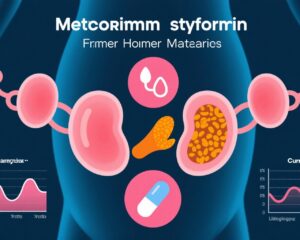Highlight
– Daily consumption of 40 g walnuts significantly increases evening urinary 6-sulfatoxymelatonin (6-SMT) levels.
– Walnut intake improves sleep latency and overall sleep quality in young adults.
– Higher urinary 6-SMT concentrations correlate with improved sleep efficiency and reduced daytime sleepiness.
– Tryptophan and melatonin in walnuts may mediate the sleep-promoting effects observed.
Study Background and Disease Burden
Sleep quality is a vital component of overall health, influencing cognitive function, mood regulation, metabolic homeostasis, and cardiovascular well-being. However, modern lifestyles contribute to widespread sleep insufficiency and poor sleep quality, with substantial consequences on physical and mental health. Identifying accessible and natural strategies to enhance sleep holds clinical and public health importance. Melatonin, a hormone synthesized by the pineal gland, is integral to circadian rhythm regulation and sleep initiation. Its metabolite, urinary 6-sulfatoxymelatonin (6-SMT), reflects systemic melatonin production and serves as a non-invasive biomarker correlating with sleep parameters.
Dietary factors have emerged as potential modulators of sleep, with certain foods containing precursors or bioactive compounds that influence melatonin metabolism. Walnuts are a nutritionally rich food source known for their tryptophan and melatonin content, both critical to sleep regulation. Despite epidemiological indications linking walnut consumption with improved sleep, controlled experimental data elucidating the causal relationship and underlying mechanisms remain limited.
Study Design
The authors conducted an open-label randomized crossover trial (NCT04799821) to investigate the effect of daily walnut intake on urinary 6-SMT levels and sleep quality parameters. The study enrolled 76 healthy young adults (mean age 24.1 ± 3.4 years; 85.5% female). Participants underwent two 8-week intervention periods separated by a 2-week washout. During the walnut intervention, subjects consumed 40 g of walnuts daily during dinner, while in the control period, they refrained from walnuts or any nuts.
Urinary 6-SMT was collected over two consecutive time windows—evening (20:00 to 23:00) and nighttime (23:00 to 07:00)—to capture melatonin metabolite fluctuations. Sleep quality assessments included objectively measured parameters such as sleep latency, wake after sleep onset, number of awakenings, and sleep efficiency. Additionally, subjective daytime sleepiness was evaluated via the Epworth Sleepiness Scale. High-performance liquid chromatography quantified tryptophan and melatonin contents in the walnut samples used.
Key Findings
The 8-week walnut intervention significantly increased evening urinary 6-SMT concentrations (p = 0.029), indicating enhanced systemic melatonin metabolism compared to baseline and control conditions where no significant differences were observed. Notably, the intervention reduced sleep latency (p = 0.001), allowing participants to fall asleep faster.
Moreover, global sleep quality, encompassing multiple sleep dimensions, improved significantly with walnut intake (p = 0.002), accompanied by reduced daytime sleepiness (p = 0.002). Partial correlation analyses demonstrated that during walnut consumption, higher evening urinary 6-SMT levels were significantly associated with greater sleep efficiency (p = 0.026) and better overall sleep quality scores (p = 0.006), suggesting a dose-dependent relationship between melatonin metabolite levels and sleep improvement.
The chemical analyses of walnuts confirmed the presence of tryptophan and melatonin, bioactive constituents plausibly mediating the observed effects. No adverse events related to walnut consumption were reported, underscoring the intervention’s safety and tolerability in young healthy adults.
Expert Commentary
This well-designed randomized crossover trial adds robust clinical evidence supporting walnuts as functional foods that may promote sleep via modulation of melatonin metabolism. The study overcomes some common limitations in nutrition research by objectively measuring urinary 6-SMT alongside comprehensive sleep assessments. The findings align with existing knowledge about tryptophan as a melatonin precursor and walnut’s unique nutrient profile conducive to enhancing endogenous melatonin synthesis.
However, the trial’s open-label nature and predominance of female young adults limit generalizability to broader populations, including older adults and individuals with sleep disorders. Further research should explore mechanistic pathways, such as gut microbiota interactions and melatonin receptor dynamics, to fully elucidate walnut’s sleep-promoting potential. Additionally, trials with polysomnography could deepen understanding of effects on sleep architecture.
Conclusion
In summary, daily consumption of 40 g walnuts for eight weeks elevates urinary 6-sulfatoxymelatonin levels and improves sleep latency, efficiency, and overall quality in young adults without adverse effects. These findings highlight walnuts as a natural, dietary adjunct for sleep promotion, leveraging intrinsic tryptophan and melatonin content to regulate circadian physiology. Given the pervasive burden of sleep disturbances and growing interest in dietary therapeutics, walnuts represent a promising, accessible intervention. Larger and longer-term studies across diverse demographic and clinical groups are warranted to confirm these benefits and optimize guidelines for dietary sleep health.
References
1. Zerón-Rugerio MF, Ibarra-Picón A, Diez-Hernández M, Comas-Basté O, Pérez-Cano FJ, Cambras T, Izquierdo-Pulido M. Daily walnut consumption increases 6-sulfatoxymelatonin urinary levels and can improve sleep quality: a randomized crossover trial. Food Funct. 2025 Sep 15;16(18):7023-7035. doi: 10.1039/d5fo00971e. PMID: 40791136.
2. Peuhkuri K, Sihvola N, Korpela R. Dietary factors and fluctuating levels of melatonin. Food Nutr Res. 2012;56. doi:10.3402/fnr.v56i0.17252.
3. Hartmann E. From tryptophan to melatonin: role in the sleep-wake cycle and circadian rhythm regulation. Neuroimmunomodulation. 2014;21(2-3):112-117. doi:10.1159/000365091.



